Understanding Wood Tile Floors: Key Differences from Hardwood and Ceramic
Wood tile floors, often referred to as wood-look tile, have become a stylish and practical alternative to traditional hardwood and ceramic flooring. They are made from materials like porcelain or ceramic and are designed to mimic the appearance of wood planks. Understanding the key differences between wood tile, hardwood, and ceramic is essential for proper cleaning and maintenance.
- Material Composition
While hardwood is made from natural wood, wood tile is composed of ceramic or porcelain. This gives the wood tile its durability and resistance to water, making it ideal for areas like bathrooms and kitchens. Unlike hardwood, which can be sensitive to moisture, wood tile floors are less prone to warping or swelling when exposed to water. - Durability and Longevity
Hardwood floors are susceptible to scratches, dents, and moisture damage, making them less suitable for high-traffic areas. Wood tile, on the other hand, is highly durable and can withstand heavy foot traffic without showing wear. The tile’s hard surface also resists scratches and dents, making it a long-lasting flooring option. - Moisture Resistance
Wood tile is impervious to moisture, unlike hardwood, which can warp or rot when exposed to water over time. This makes wood tile floors perfect for bathrooms, kitchens, and even outdoor areas where moisture is prevalent. Hardwood requires careful maintenance and protection from water, whereas wood tile does not need this level of attention. - Maintenance Requirements
Hardwood floors require regular sealing, refinishing, and specialized cleaning products to maintain their appearance. Wood tile floors, however, are much easier to care for, as they do not require sealing and can be cleaned with standard tile-safe cleaning solutions. This makes wood tile a low-maintenance option for busy households. - Temperature Sensitivity
Hardwood expands and contracts with changes in temperature and humidity, which can lead to gaps between planks over time. Wood tile is less affected by temperature fluctuations, making it a more stable option for regions with extreme weather conditions. This makes wood tile suitable for both heated floors and outdoor use. - Aesthetic Appeal
While hardwood offers the beauty of natural grain patterns, wood tile provides a realistic wood-look finish that mimics different types of wood, including oak, walnut, and cherry. Wood tile can offer the same visual warmth as hardwood but with the added benefits of durability and easy maintenance.

Essential Tools and Materials for Cleaning Wood Tile Floors
Cleaning wood tile floors requires the right tools and materials to maintain their appearance without causing damage. With the proper equipment on hand, you can keep your floors spotless and extend their lifespan. Here are the essential tools and materials needed for cleaning wood tile floors.
Microfiber Mop
A microfiber mop is one of the best tools for cleaning wood tile floors. Its soft, non-abrasive material effectively picks up dirt and dust without scratching the tile’s surface. Additionally, microfiber mops are highly absorbent, allowing you to clean without leaving excess moisture behind.
Vacuum Cleaner with a Hard Floor Attachment
A vacuum cleaner with a hard floor setting or attachment is perfect for picking up dirt, dust, and debris between the tiles. Be sure to use a vacuum designed for hard floors to avoid scratching the tiles. Avoid using vacuums with beater bars, as these can cause damage to the surface.
Tile-Safe Cleaning Solution
Whether you prefer a store-bought cleaner or a DIY solution, ensure that it is safe for use on tile floors. Avoid harsh chemicals that can damage the finish or discolor the grout. Look for a neutral pH cleaner designed for tile and grout surfaces for the best results.
Soft Bristle Brush or Grout Brush
Over time, grout lines can accumulate dirt and grime, which regular mopping may not reach. A soft bristle brush or a grout brush is ideal for scrubbing grout lines without damaging the surrounding tile. This is particularly important for maintaining the overall appearance of your wood tile floors.
Bucket and Warm Water
A simple bucket and warm water are essential for rinsing your mop and cleaning solution. Warm water helps to break down dirt and grime, while the bucket allows you to wring out your mop to avoid oversaturating the floor.
Dry Cloth or Towel
After mopping, use a dry cloth or towel to quickly dry the surface. While wood tile floors are moisture-resistant, it’s always a good idea to remove excess water to prevent water spots or streaks on the surface.
Step-by-Step Guide to Cleaning Wood Tile Floors Properly
Cleaning wood tile floors is straightforward, but following the correct process will ensure the best results. A consistent cleaning routine will keep your floors looking fresh and prevent buildup over time. Here’s a step-by-step guide to properly cleaning wood tile floors.
Step 1: Remove Loose Debris
Begin by removing any loose debris from the surface of the floor. Use a vacuum cleaner with a hard floor attachment or a broom to sweep away dirt, dust, and small particles. This prevents scratching the tile when you mop later in the process. Pay extra attention to grout lines, where dirt can easily accumulate.
Step 2: Prepare the Cleaning Solution
Next, prepare your cleaning solution. You can either use a commercial cleaner designed for tile floors or make your own by mixing warm water with a mild dish soap or vinegar solution. Avoid using harsh chemicals that can erode the tile or discolor the grout.
Step 3: Mop the Floor
Dip your microfiber mop into the cleaning solution and wring it out thoroughly to avoid oversaturating the floor. Mop in small sections, working from one side of the room to the other. Be sure to rinse the mop frequently to prevent spreading dirt around. Use gentle strokes and avoid scrubbing too hard to protect the tile finish.
Step 4: Spot-Clean Stains and Grout
If you notice any stains or dirty grout lines, use a soft bristle brush or grout brush to scrub those areas gently. Apply a small amount of your cleaning solution directly to the grout or stain, and scrub in a circular motion. Rinse with clean water afterward to remove any residue.
Step 5: Rinse the Floor
After mopping, it’s a good idea to rinse the floor with clean water. This will remove any remaining soap or cleaning solution, which can leave behind a residue if not properly rinsed. Use a fresh microfiber mop or a damp cloth for this step.
Step 6: Dry the Floor
Finally, dry the floor with a clean, dry towel or cloth to prevent water spots and streaks. Although wood tile is moisture-resistant, drying the floor will help preserve its appearance and prevent any long-term water damage to the grout.
Best Cleaning Solutions for Wood Tile: DIY and Commercial Options
Choosing the right cleaning solution for wood tile floors is crucial to maintaining their appearance and longevity. Whether you prefer commercial products or homemade cleaners, knowing what works best for your wood tile can make all the difference. Here are some of the best cleaning solutions for wood tile floors.
Commercial Tile Floor Cleaners
Several commercial cleaners are specifically formulated for tile and grout cleaning. Products like Bona, Black Diamond, and Method offer gentle yet effective cleaning without harming the finish of wood tile. These cleaners are often pH-neutral, which is safe for tile surfaces and prevents damage to the grout.
Vinegar and Water Solution
A popular DIY option is a mixture of vinegar and water. Vinegar is a natural cleaning agent that helps cut through grime and grease without damaging tile surfaces. Mix equal parts of water and white vinegar in a spray bottle or bucket. Be cautious, though: vinegar is acidic, so limit its use on grout to prevent erosion.
Baking Soda and Water Paste
For stubborn stains or dirty grout lines, a paste made from baking soda and water can work wonders. Apply the paste to the stained area or grout, and use a soft brush to gently scrub. Baking soda is mildly abrasive, making it ideal for tough spots without scratching the tile.
Dish Soap and Warm Water
A mild dish soap combined with warm water is another excellent cleaning solution. Dish soap effectively breaks down grease and dirt, making it perfect for cleaning wood tile floors in kitchens. This solution is gentle enough for daily cleaning without damaging the finish.
Essential Oil Mixtures
For those who prefer a natural, fragrant cleaning solution, you can add a few drops of essential oils like lemon or tea tree oil to your cleaning water. These oils not only provide a pleasant scent but also have antibacterial properties, which can help sanitize the floor while you clean.
Avoid Harsh Chemicals
It’s essential to avoid using harsh chemicals such as bleach, ammonia, or acidic cleaners on wood tile floors. These can damage the finish and erode the grout over time. Stick to mild, pH-neutral cleaners for regular use to maintain the tile’s integrity and appearance.
Preventing Damage: Tips for Maintaining the Look of Wood Tile Floors
While wood tile floors are more durable than traditional hardwood, they still require careful maintenance to preserve their beauty. Preventing damage is key to keeping your floors in top condition for years to come. Here are some tips to help you maintain the look of your wood tile floors.
Use Area Rugs and Mats
Place area rugs or mats in high-traffic areas like entryways, hallways, and kitchens to protect your wood tile floors from excessive wear. Rugs can help catch dirt, debris, and moisture before they reach the tile surface, preventing scratches and stains.
Furniture Pads
Install felt pads under the legs of furniture to prevent scratches when moving chairs, tables, or sofas. Furniture can easily scratch or scuff the surface of the tile, so using protective pads is an effective way to avoid damage.
Regular Sweeping and Vacuuming
Dirt and debris can act like sandpaper on your wood tile floors, gradually wearing down the finish. Regular sweeping or vacuuming with a hard floor attachment will help remove these particles before they cause scratches. Make it a habit to sweep daily, especially in high-traffic areas.
Avoid High Heels and Sharp Objects
Walking on wood tile floors with high heels or other sharp objects can cause dents and scratches. Encourage family members and guests to remove shoes at the door, or at least avoid wearing sharp footwear inside the home to preserve the tile’s appearance.
Clean Up Spills Immediately
Although wood tile is more moisture-resistant than hardwood, it’s still important to clean up spills immediately to prevent water damage or stains. Use a soft cloth or mop to absorb the liquid and dry the area thoroughly.
Seal Grout Lines
Over time, grout lines can become stained or dirty, detracting from the overall appearance of your wood tile floors. To prevent this, consider sealing the grout lines periodically. A grout sealer will protect against moisture, stains, and dirt buildup, keeping your grout looking fresh.
Common Mistakes to Avoid When Cleaning Wood Tile Floors
Cleaning wood tile floors might seem straightforward, but some common mistakes can lead to damage or reduce their longevity. By avoiding these errors, you can keep your floors looking beautiful for years. Here are the most common mistakes to avoid when cleaning wood tile floors.
Using Too Much Water
Even though wood tile is moisture-resistant, using excessive water during cleaning can lead to issues with the grout. Too much water can seep into the grout lines, weakening them over time. Always wring out your mop thoroughly and avoid soaking the floor.
Using Harsh Chemicals
Harsh chemicals like bleach, ammonia, and acidic cleaners can erode the grout and damage the finish of wood tile. Stick to pH-neutral cleaners or natural solutions like vinegar and water to clean your floors without harming them.
Ignoring the Grout
Grout lines are often neglected during regular cleaning, leading to dirt and grime buildup. Make sure to clean the grout lines regularly using a soft brush or a grout cleaner to maintain the overall appearance of the floor.
Scrubbing with Abrasive Tools
Avoid using abrasive scrubbers, steel wool, or rough brushes on wood tile floors. These tools can scratch the surface of the tile, dulling its appearance. Instead, opt for soft-bristled brushes or microfiber mops for a gentle yet effective clean.
Skipping Regular Maintenance
Regular maintenance is crucial to keeping your wood tile floors in good condition. Skipping routine cleaning can lead to dirt buildup, stains, and scratches that are harder to remove over time. Make it a habit to clean your floors weekly to prevent long-term damage.
Dragging Furniture
Dragging heavy furniture across wood tile floors can scratch or crack the tile. Always lift furniture when moving it, and use furniture pads to protect the surface from damage. Being mindful of how you move objects can prevent costly repairs down the line.
Long-Term Care: How to Keep Your Wood Tile Floors Looking New
With the right long-term care strategy, your wood tile floors can retain their fresh appearance for many years. Consistent cleaning, preventive measures, and occasional deep cleaning are key to preserving the beauty and functionality of your wood tile floors. Here’s how to keep them looking new over time.
Establish a Cleaning Routine
Consistency is key when it comes to maintaining wood tile floors. Establish a regular cleaning routine that includes sweeping or vacuuming at least a few times a week to remove dirt and debris. Incorporate mopping into your routine once a week to prevent buildup.
Use Protective Measures
Prevent scratches and scuffs by using area rugs, mats, and furniture pads. These protective measures will safeguard high-traffic areas and prevent damage from heavy furniture. Over time, these small actions can make a big difference in the condition of your floors.
Deep Clean Periodically
While regular mopping will keep your floors clean, it’s essential to perform a deep clean every few months. This involves thoroughly cleaning grout lines, removing any stains, and refreshing the tile’s surface. Use a specialized tile cleaner for the best results during deep cleaning sessions.
Monitor for Signs of Wear
Keep an eye on the condition of your floors, especially the grout. Over time, grout can become discolored or worn down. If you notice signs of wear, consider reapplying a grout sealer to protect it from moisture and dirt.
Polish and Buff
Occasionally, you may want to polish and buff your wood tile floors to restore their shine. Use a tile-safe polish and follow the manufacturer’s instructions. Polishing will enhance the floor’s appearance and add a protective layer to the surface.
Repair and Replace Damaged Tiles
If you notice any cracked or damaged tiles, it’s essential to repair or replace them as soon as possible. Ignoring damaged tiles can lead to further issues, such as moisture seeping into the cracks. Timely repairs will maintain the integrity and beauty of your floors.
How to Clean Tile Floors
How to Clean Ceramic Tile Floors
How to Clean Tile Floors
Keep Your Porcelain Wood Look Tiles Looking Like New
How to Clean Tile Floors with Vinegar
Related Posts:
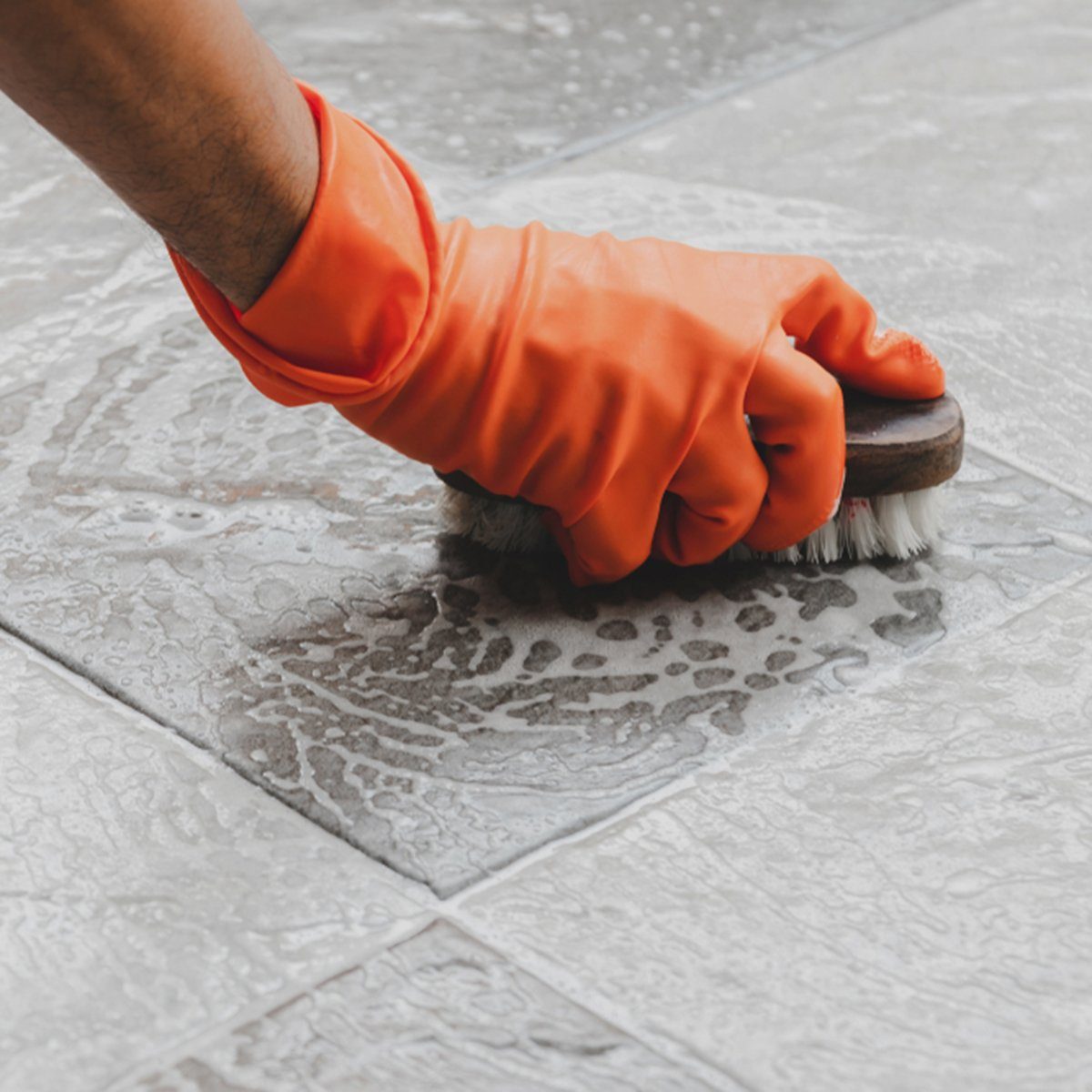


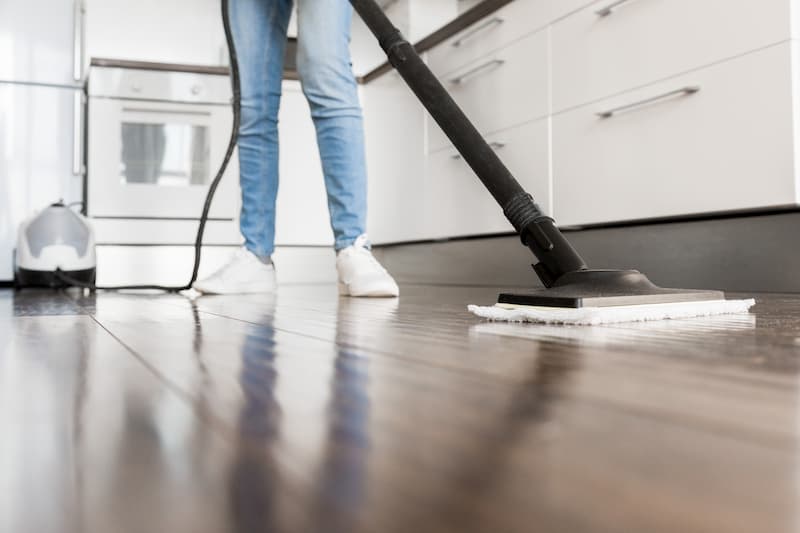
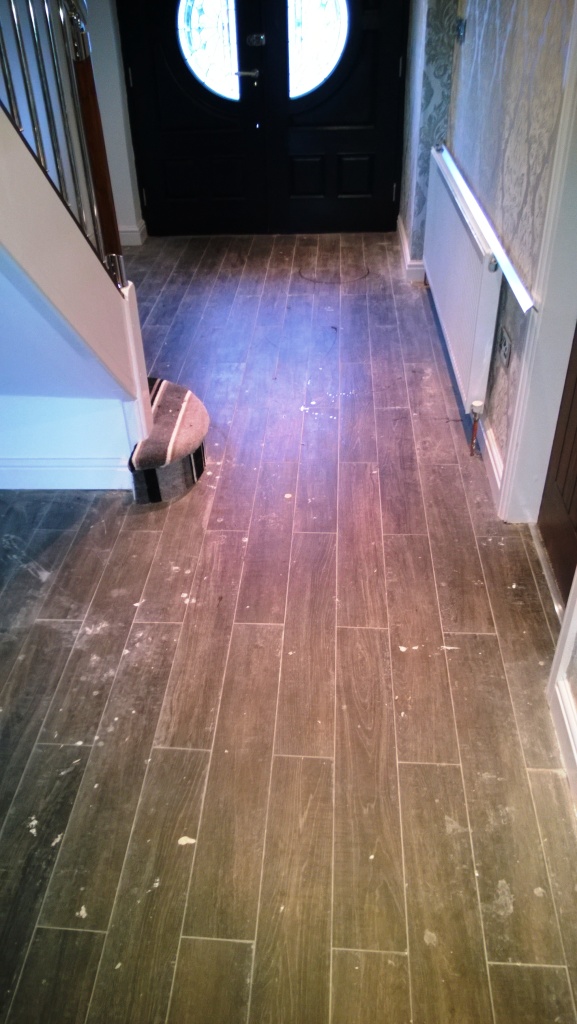


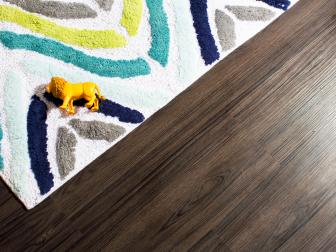
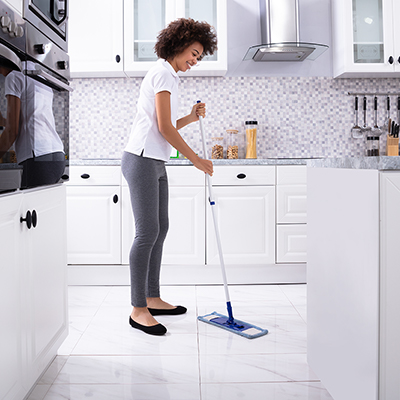
.jpg)
